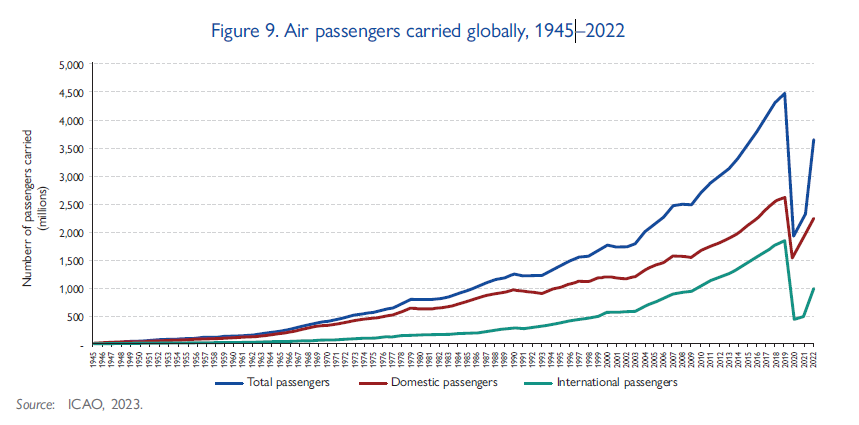Digital technology and migration
Why digitalise?
In migration policy and practice there has been significant investment by States in digitalisation and automation over recent years (and in some cases, decades), including to realise efficiencies and manage significant increases in volume. Australia, for example, embarked on its ‘global working’ program in the mid-1990s in order to move from a paper-based application processing system to a digital platform supported by service delivery partners in locations with limited/no online accessibility. One of the early online visa application systems resulted in between 15 and 20 basic application checks being automated, thereby significantly reducing processing time and staffing costs.
The table and figures show the increase in international migrants over time – both numerically and proportionally – and at a slightly faster rate than previously anticipated, including because of the prevailing forces of globalization. Through the data you can make connections between the expansion of digital technology and the implications for migration.


During 2020, many analysts around the world were closely following the latest information and analysis to understand the migration and mobility implications of COVID-19 on international remittances. Several countries have taken measures to encourage the use of digital services during the pandemic, and mobile money platforms have made the transfer of remittances cheaper and faster than the traditional cash and bank transfers. Through mobile money, remittances have become more traceable, making this method safer than informal channels. [From WMR 2022 Ch. 2, see also module 7 on international remittances]
Figure 2. International remittance flows to low- and middle-income countries (1990–2020)

Figure 3. Global internet and mobile telephone access, 1995 to 2019 (ITU, 2020)

Fill in the blanks below
According to the figures above, fill in the blanks.
In 2020 there were approximately international migrants.
In 2018 there were approximately billion air transport passengers carried.
In 2019 there were approximately internet users (per 100 people).
In your own words, describe how the increase in global internet and mobile telephone access relates to the flow of international remittances.